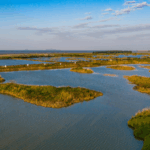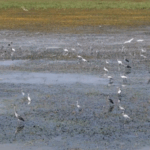In a stunning environmental turnaround, northwest China’s Ningxia region has transformed its Shahu Lake from a stagnant marsh into a thriving oasis for migratory birds—proving that nature can bounce back with a little help! 🌱
From Murky to Magical
Once plagued by toxic water and dying ecosystems, Shahu Lake is now a bustling pit stop for winged travelers. This autumn, the lake welcomed its first wave of migratory guests, with more expected soon. To keep them fed, locals planted a 200-hectare ‘bird buffet’ rice field—talk about hospitality! 🍚🕊️
Eco-Upgrade: How They Did It
After launching a massive cleanup in 2017, authorities built a 400-hectare wetland to boost water flow and purification. The results? Crystal-clear water, 32 new bird species (including rare black storks!), and over 210 species total—up from just 180. Even geese and cormorants are sticking around year-round. 🦢✨
Ningxia’s Green Wins
Ningxia isn’t stopping at wetlands: 26 wetland parks, 4 nature reserves, and restored desert-to-grassland ecosystems are driving big wins. Air quality here now hits ‘excellent’ 80%+ of the time, while the Yellow River’s Ningxia section stays safe for swimming. Forests and grasslands are expanding, and snow leopards—gone for decades—are back! 🐆🌳
TL;DR: Where fish once died, birds now thrive. China’s eco-revamp shows climate action can be a feather in everyone’s cap. 📈🌎
Reference(s):
Revived desert wetland in China becomes paradise for migratory birds
cgtn.com





